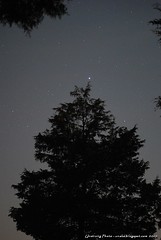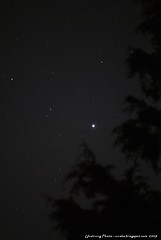

Sirius (Alpha Canis Majoris) is the brightest star in the sky after the sun, with a visual apparent magnitude of −1.46. It is actually a two star system made up of Sirius A and Sirius B (or the "pup"). Although Sirius A is 10,000 times more luminous than it's companion, Sirius B was once the brighter of the two.
Part of the reason for it's brightness is the Sirius system's proximity to the Solar system. At only 8.6 light years Sirius A and B are two of the eight closest stars to us. However they are also 25 times more luminous than the Sun.
According to wikipedia, Sirius has over 50 other designations and names (emphasis mine):
In Arabic it is known as الشعرى (transliteration: 'al-ši‘rā' or 'al-shira'; English: the leader), from which the alternate name 'Aschere' derives. In Sanskrit, it is known as 'Mrgavyadha,' "deer hunter," or 'Lubdhaka,' "hunter." As Mrgavyadha, the star represents Rudra (Shiva). In Scandinavia, the star has been known as Lokabrenna ("burning done by Loki," or "Loki's torch"), while the Japanese vernacular name of the star is 青星 (Aoboshi, "blue star"). In the astrology of the Middle Ages, Sirius was a Behenian fixed star, associated with beryl and juniper. Its kabbalistic symbolwas listed by Heinrich Cornelius Agrippa.
I think I might start referring to it as "Lokabrenna" :)

No comments:
Post a Comment